VAST UNIVERSE
In pictures: The James Webb telescope’s first images
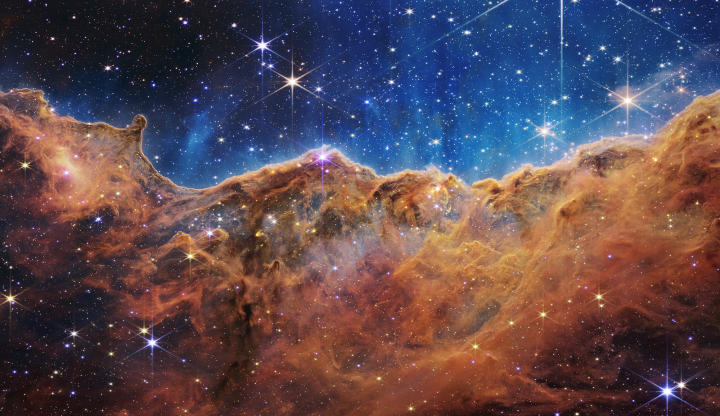
The James Webb telescope has released its first images, providing a spectacular glimpse into the history of the universe.
In a sneak peek, NASA released the first image from its James Webb Space Telescope – the deepest and sharpest infrared image of the distant universe to date. The image shows the galaxy cluster SMACS 0723 overflowing with detail.
“Thousands of galaxies – including the faintest objects ever observed in the infrared – have appeared in Webb’s view for the first time. This slice of the vast universe is approximately the size of a grain of sand held at arm’s length by someone on the ground,” NASA announced.
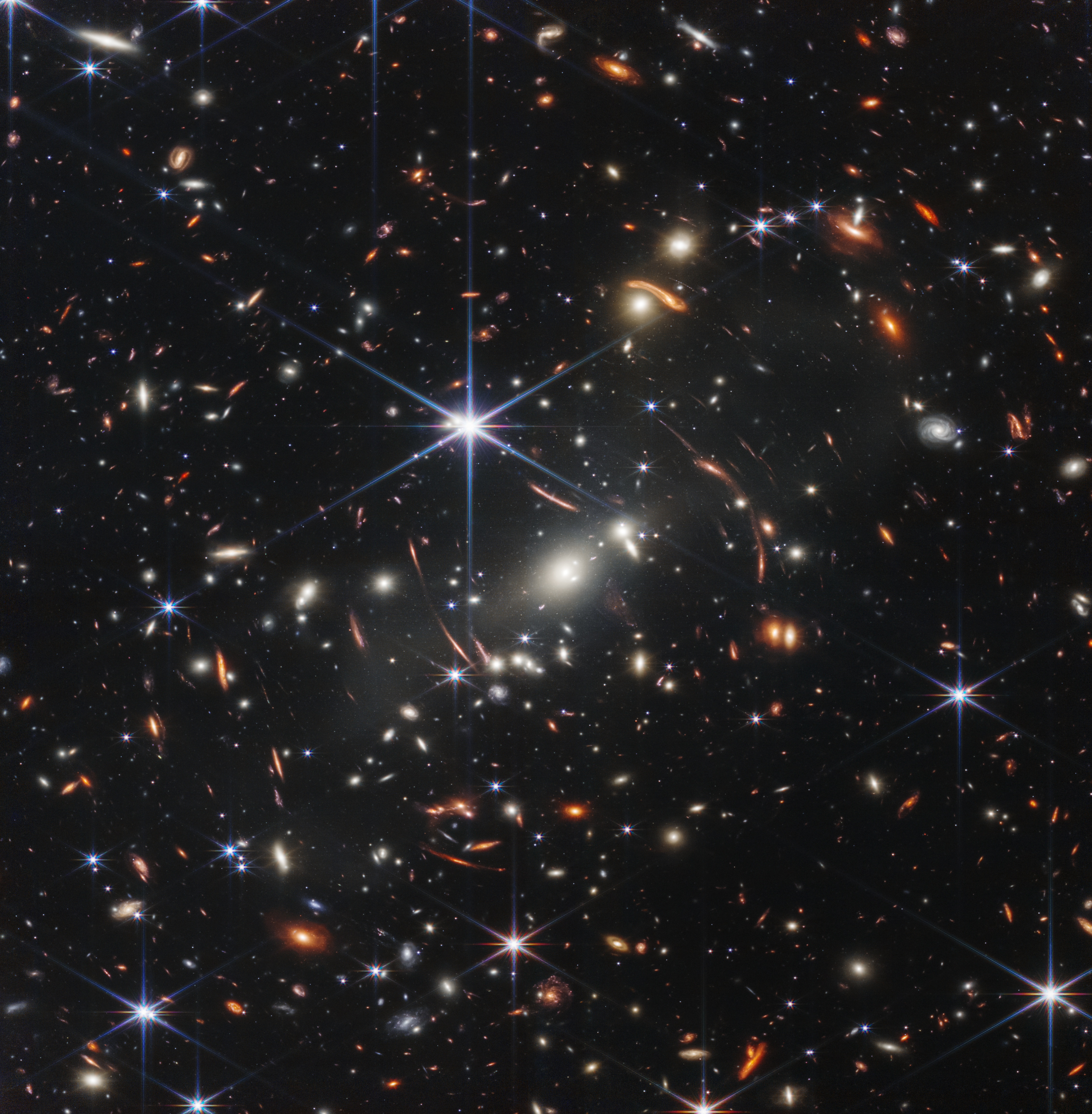
Webb’s First Deep Field (NIRCam Image). Thousands of galaxies flood this near-infrared image of galaxy cluster SMACS 0723. High-resolution imaging from NASA’s James Webb Space Telescope combined with a natural effect known as gravitational lensing made this finely detailed image possible. ebb’s highly detailed image may help researchers measure the ages and masses of star clusters within these distant galaxies. This might lead to more accurate models of galaxies that existed at cosmic “spring,” when galaxies were sprouting tiny “buds” of new growth, actively interacting and merging, and had yet to develop into larger spirals. Ultimately, Webb’s upcoming observations will help astronomers better understand how galaxies form and grow in the early universe. Image: NASA, ESA, CSA, STScI
The images come just over six months after the telescope was launched on 25 December 2021 from Europe’s Spaceport near Kourou, French Guiana.
The James Webb Space Telescope is the largest telescope that has ever been placed in space – its sunshield alone is the size of a tennis court – and it is 100 times more powerful than the Hubble telescope.
Webb is an infrared telescope, with a main imager that can detect light from both the earliest stars and galaxies in the process of formation, as well as young stars.
Its mission is to look back in time at the universe, and astronomers believe the results will “fundamentally alter our understanding” of it, NASA said.
“It will unfold the universe, transforming how we think about the night sky and our place in the cosmos. The telescope lets us look back to see a period of cosmic history never before observed. Webb can peer into the past because telescopes show us how things were – not how they are right now.
“It can also explore distant galaxies, farther away than any we’ve seen before.”
And now, for the first time, humanity has a front-row seat to the history of the universe, allowing us to gaze upon the extraordinary, spectacular worlds beyond our planet.
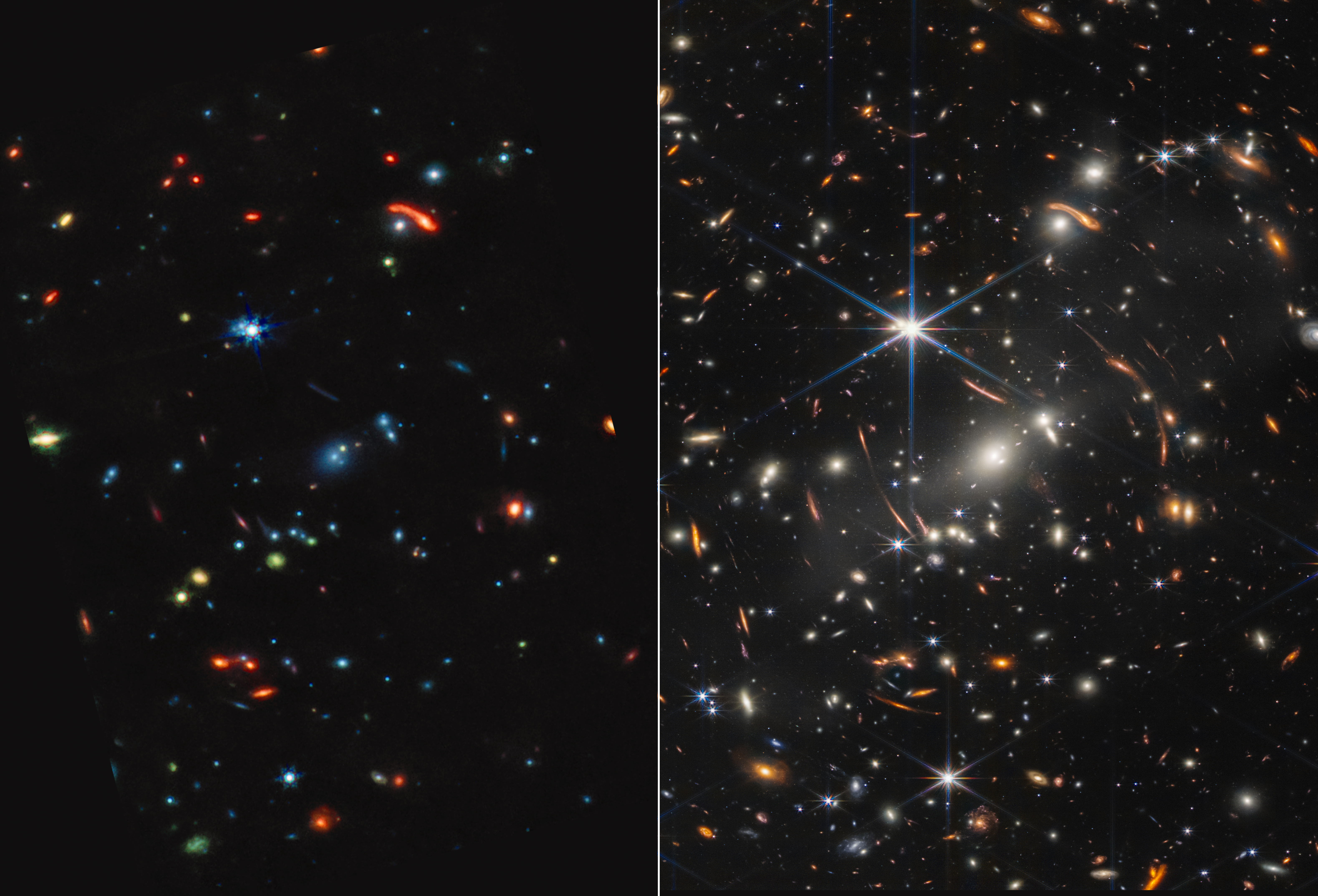
Webb’s First Deep Field (MIRI and NIRCam Images Side by Side). Galaxy cluster SMACS 0723 is a technicolour landscape when viewed in mid-infrared light by NASA’s James Webb Space Telescope. Compared to Webb’s near-infrared image at the right, the galaxies and stars are awash in new colours. Image: NASA, ESA, CSA, STScI
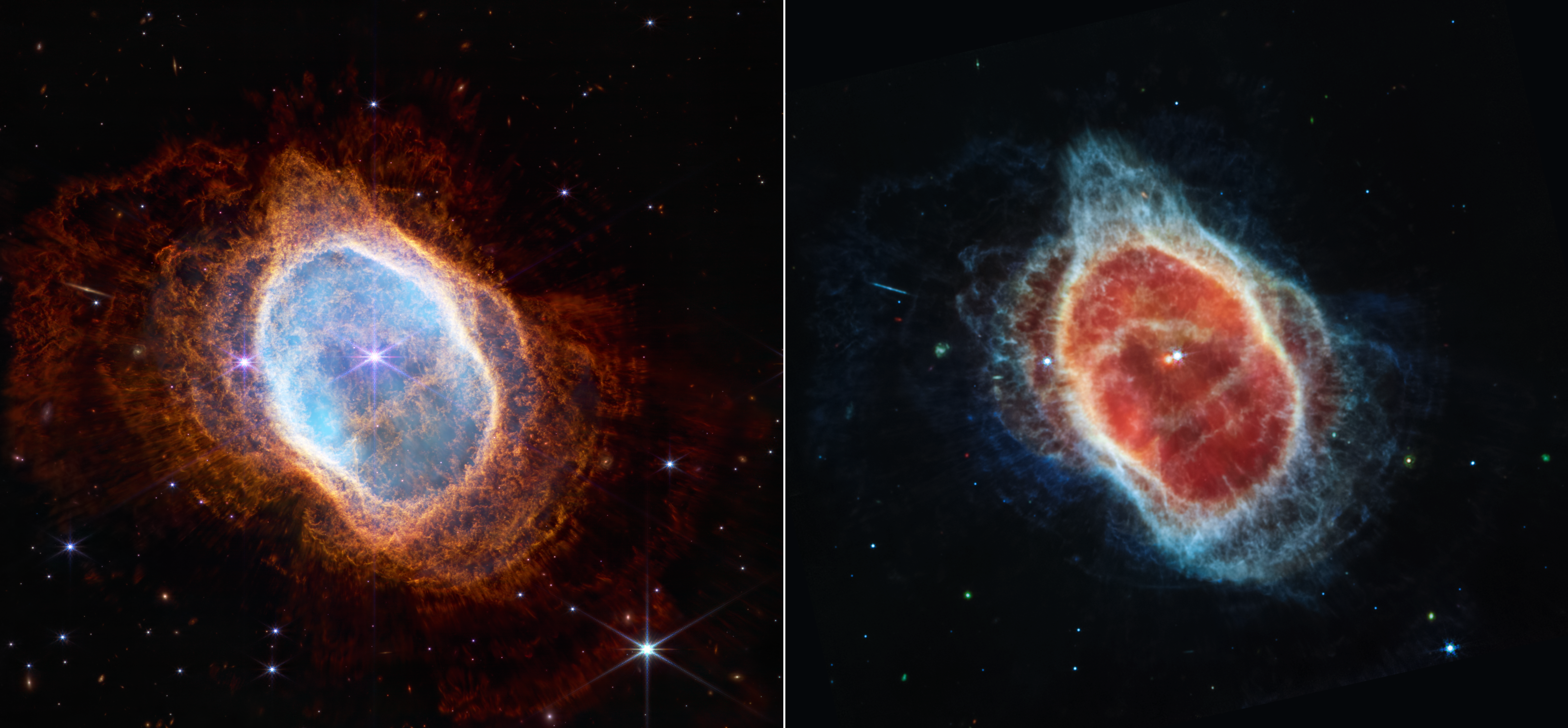
Southern Ring Nebula (NIRCam and MIRI Images Side by Side). This side-by-side comparison shows observations of the Southern Ring Nebula in near-infrared light, at left, and mid-infrared light, at right, from NASA’s Webb Telescope. The images look very different because NIRCam and MIRI collect different wavelengths of light. NIRCam observes near-infrared light, which is closer to the visible wavelengths our eyes detect. MIRI goes farther into the infrared, picking up mid-infrared wavelengths. The second star appears more clearly in the MIRI image because this instrument can see the gleaming dust around it. Image: NASA, ESA, CSA, STScI
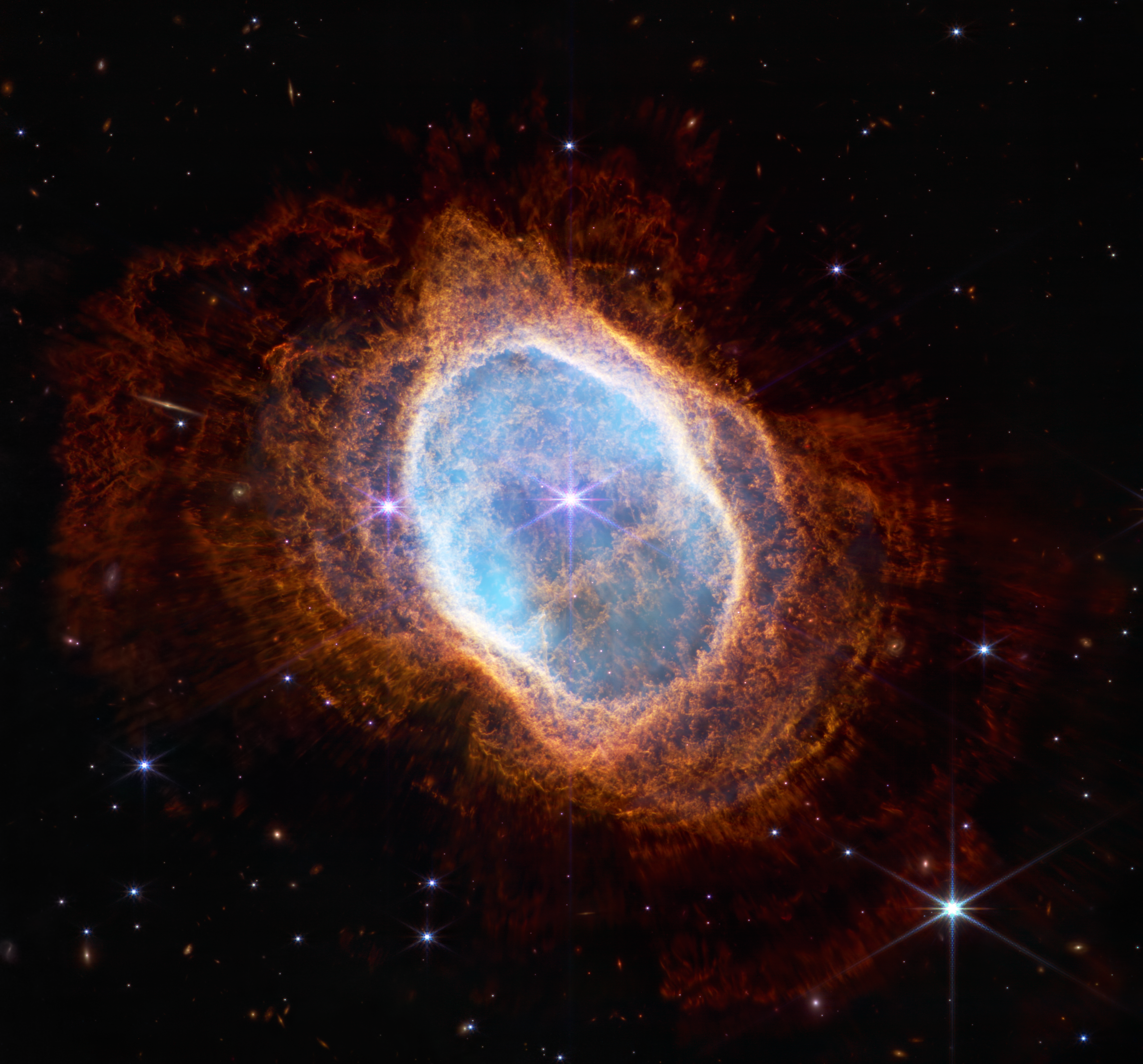
Southern Ring Nebula (NIRCam Image). The bright star at the centre of NGC 3132, while prominent when viewed by NASA’s Webb Telescope in near-infrared light, plays a supporting role in sculpting the surrounding nebula. A second star, barely visible at the lower left along one of the bright star’s diffraction spikes, is the nebula’s source. It has ejected at least eight layers of gas and dust over thousands of years. This is not only a crisp image of a planetary nebula – it also shows us objects in the vast distances of space behind it. The transparent red sections of the planetary nebula – and all the areas outside it – are filled with distant galaxies. Image: NASA, ESA, CSA, STScI
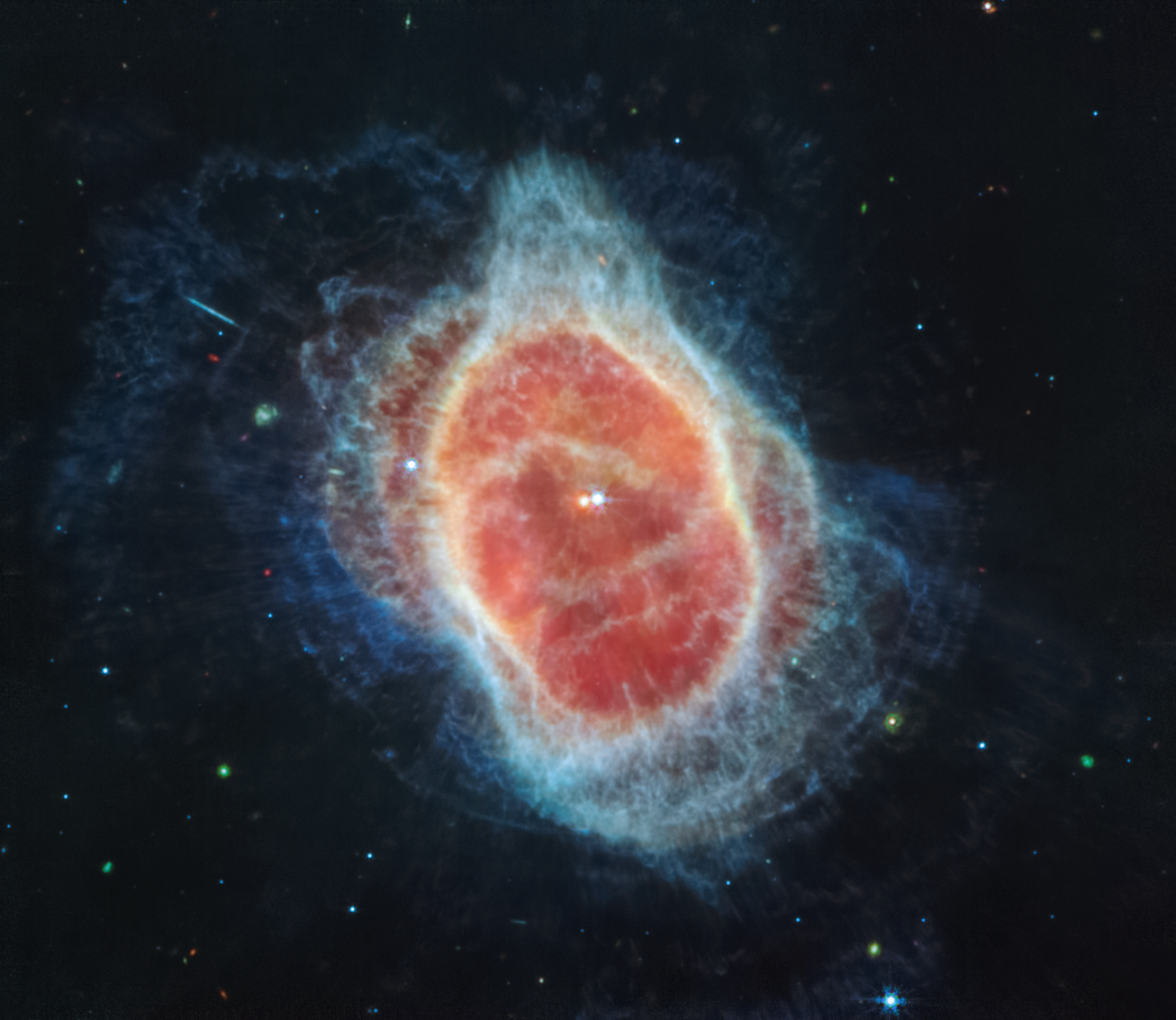
Southern Ring Nebula (MIRI Image). NASA’s Webb Telescope has revealed the cloak of dust around the second star, shown at left in red, at the centre of the Southern Ring Nebula for the first time. It is a hot, dense white dwarf star. As it transformed into a white dwarf, the star periodically ejected mass – the shells of material you see here. As if on repeat, it contracted, heated up – and then, unable to push out more material, pulsated. Image: NASA, ESA, CSA, STScI
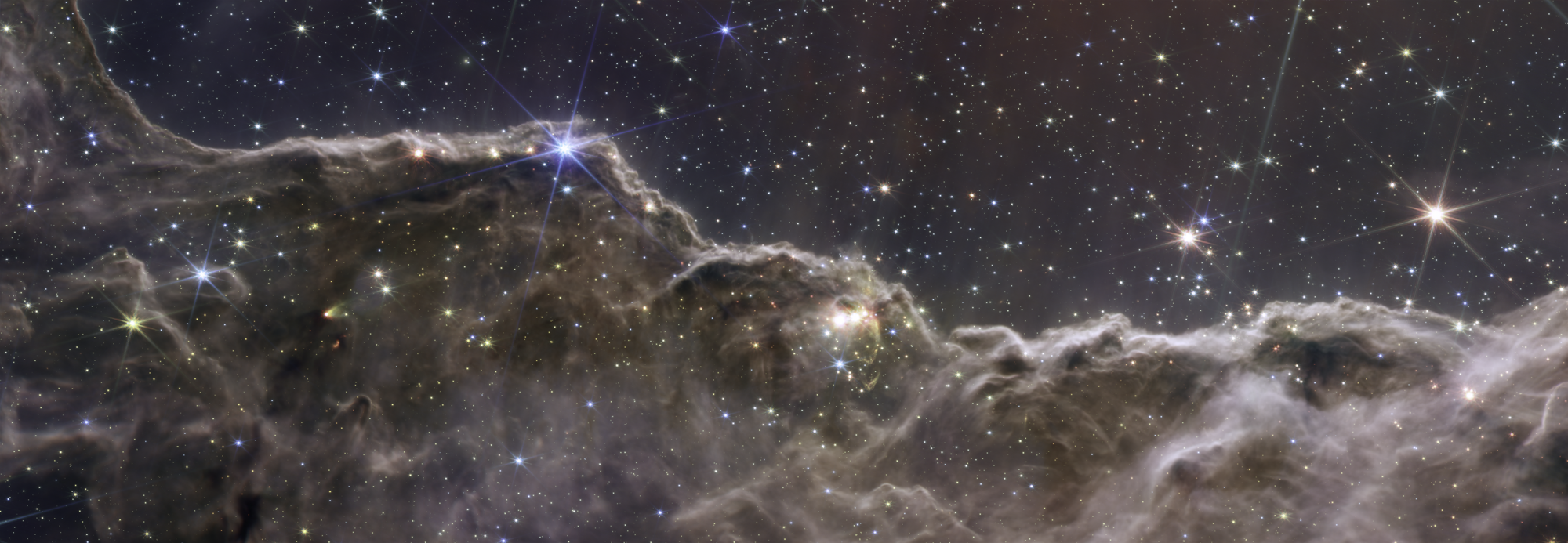
“Cosmic Cliffs” in the Carina Nebula (NIRCam and MIRI Composite Image). Astronomers using NASA’s James Webb Space Telescope combined the capabilities of the telescope’s two cameras to create a never-before-seen view of a star-forming region in the Carina Nebula. Captured in infrared light by the Near-Infrared Camera (NIRCam) and Mid-Infrared Instrument (MIRI), this combined image reveals previously invisible areas of star birth. Image: NASA, ESA, CSA, STScI
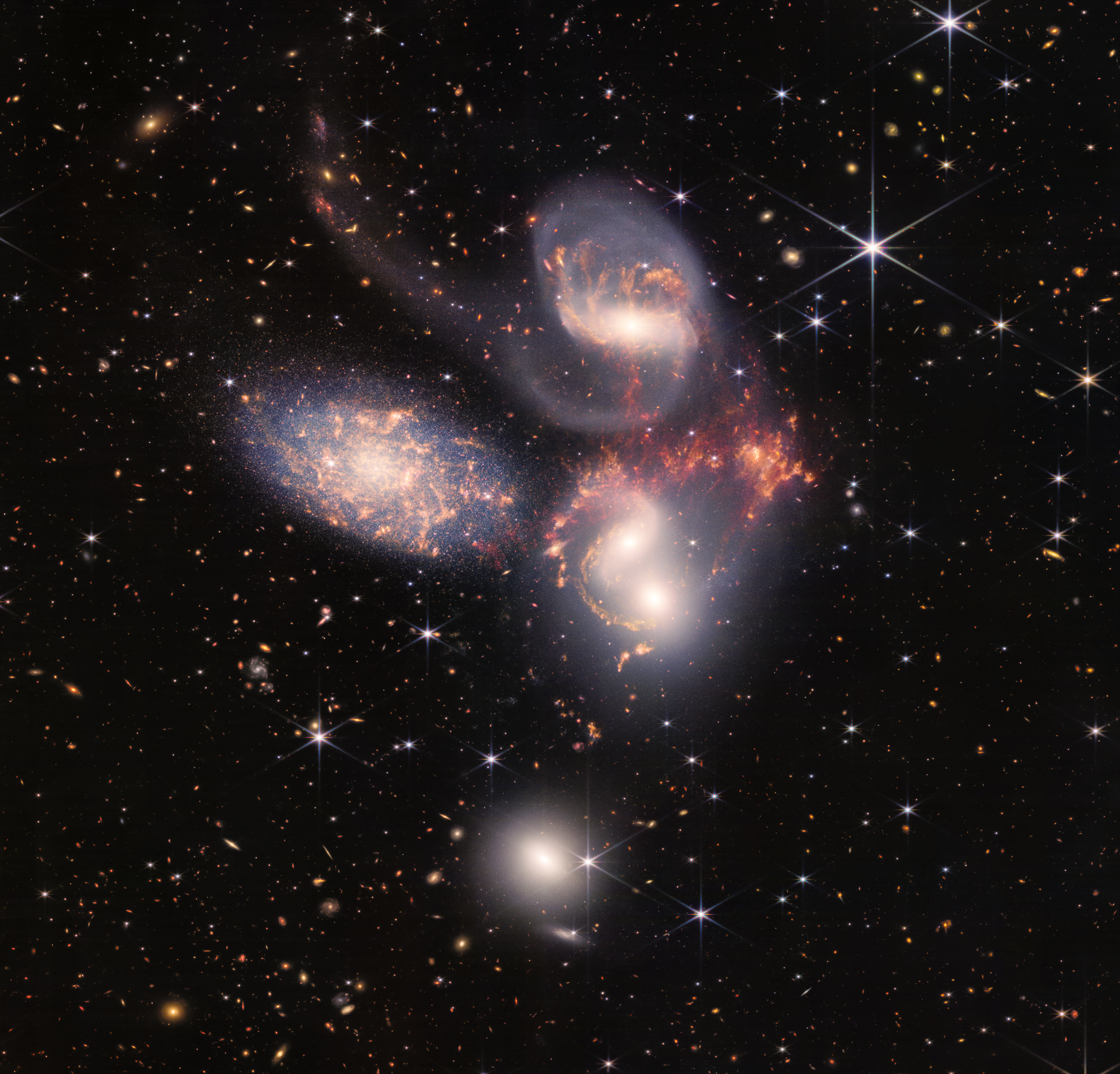
Stephan’s Quintet (NIRCam and MIRI Composite Image). With its powerful, infrared vision and extremely high spatial resolution, Webb shows never-before-seen details in this galaxy group. Sparkling clusters of millions of young stars and starburst regions of fresh star birth grace the image. Sweeping tails of gas, dust and stars are being pulled from several of the galaxies due to gravitational interactions. Most dramatically, Webb’s MIRI instrument captures huge shock waves as one of the galaxies, NGC 7318B, smashes through the cluster. These regions surrounding the central pair of galaxies are shown in the colours red and gold. Image: NASA, ESA, CSA, STScI
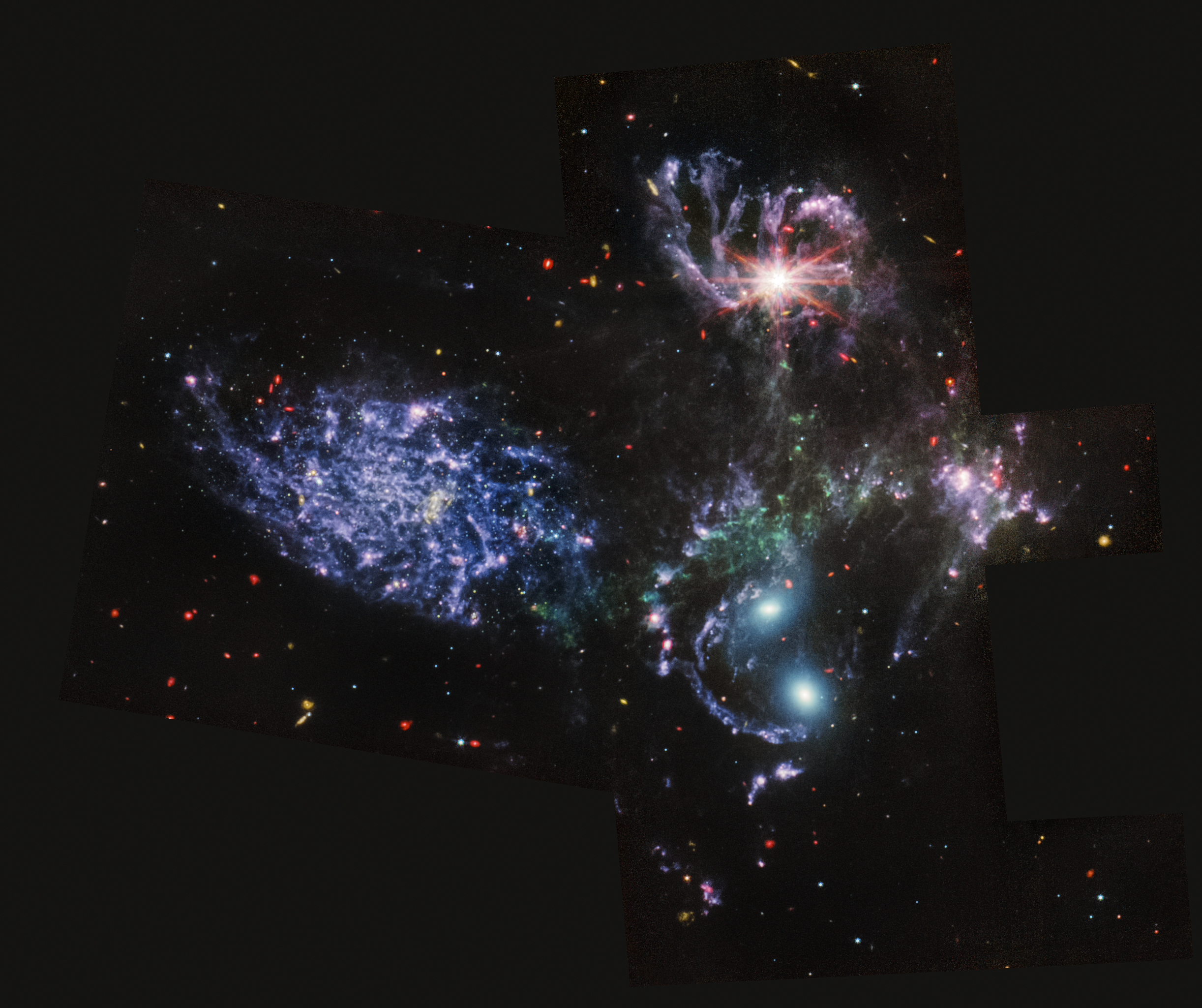
Stephan’s Quintet (MIRI Image). With its powerful, mid-infrared vision, the Mid-Infrared Instrument (MIRI) shows never-before-seen details of Stephan’s Quintet, a visual grouping of five galaxies. MIRI pierced through dust-enshrouded regions to reveal huge shock waves and tidal tails, gas and stars stripped from the outer regions of the galaxies by interactions. It also unveiled hidden areas of star formation. The new information from MIRI provides invaluable insights into how galactic interactions may have driven galaxy evolution in the early universe. Stephan’s Quintet’s topmost galaxy – NGC 7319 – harbours a supermassive black hole 24 million times the mass of the Sun. It is actively accreting material and puts out light energy equivalent to 40 billion Suns. MIRI sees through the dust surrounding this black hole to unveil the strikingly bright active galactic nucleus. Image: NASA, ESA, CSA, STScI
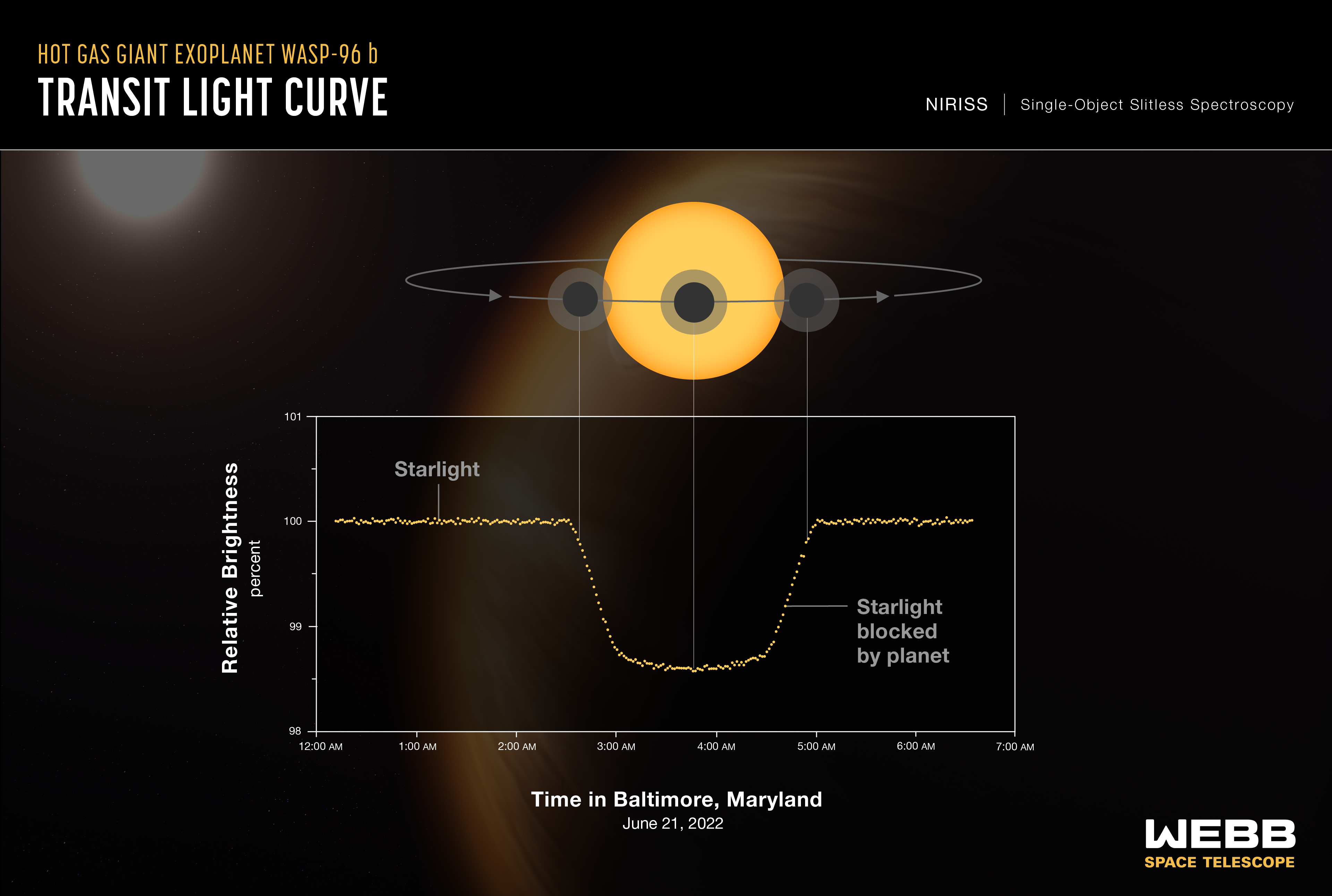
Exoplanet WASP-96 b (NIRISS Transit Light Curve). A light curve from Webb’s Near-Infrared Imager and Slitless Spectrograph (NIRISS) shows the change in brightness of light from the WASP-96 star system over time as the planet transits the star. WASP-96 b is a hot gas giant exoplanet that orbits a Sun-like star roughly 1,150 light-years away, in the constellation Phoenix. The planet orbits extremely close to its star (less than 1/20th the distance between Earth and the Sun) and completes one orbit in less than 3½ Earth-days. The planet’s discovery, from ground-based observations, was announced in 2014. Image: NASA, ESA, CSA, STScI
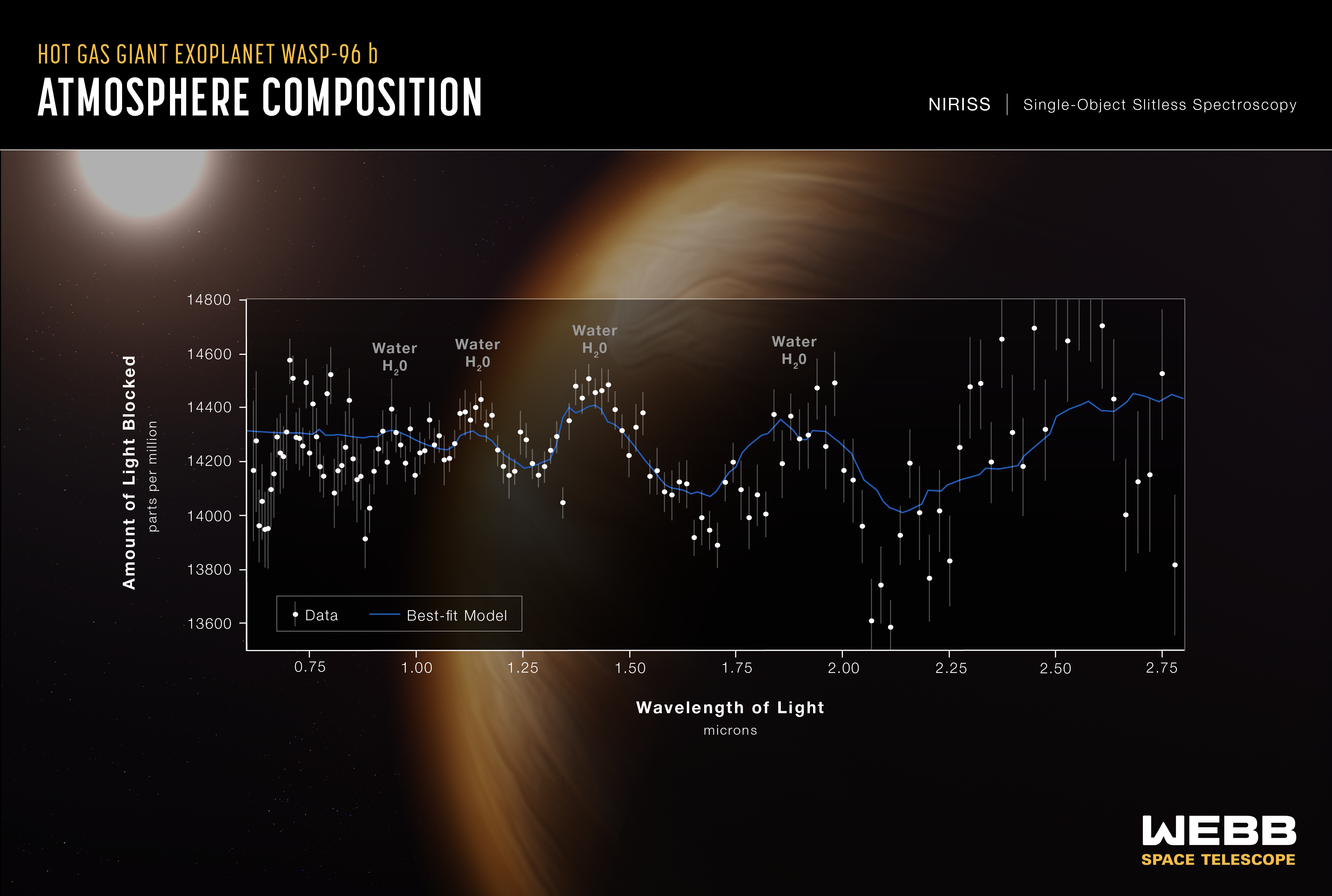
Exoplanet WASP-96 b (NIRISS Transmission Spectrum). A transmission spectrum made from a single observation using Webb’s Near-Infrared Imager and Slitless Spectrograph (NIRISS) reveals atmospheric characteristics of the hot gas giant exoplanet WASP-96 b. This is the most detailed infrared exoplanet transmission spectrum ever collected. Image: NASA, ESA, CSA, STScI
DM/ML
A full array of Webb’s first images and spectra is available here.
In case you missed it, also read Why the launch of the James Webb telescope could be the most important event of our lifetime
Why the launch of the James Webb telescope could be the most important event of our lifetime


















 Become an Insider
Become an Insider
these images serve to put our planet and its issues’ irrelevance in the bigger scheme into context. None of us can comprehend the scale or can imagine what even one billion light years entails. We think Mars is far away and it is about 180 seconds away…
Breathtakingly beautiful images… we are less than a grain of sand in the greater scheme of things!
That should make us think…
We don’t need the James Webb telescope to make us marvel at the universe. Take a lead from Edgar Mitchell and grab a politician (of any persuasion) by the scruff of the neck and drag him to the top of Table Mountain and say, ‘Look at that, you son of a bitch’, just before you push!